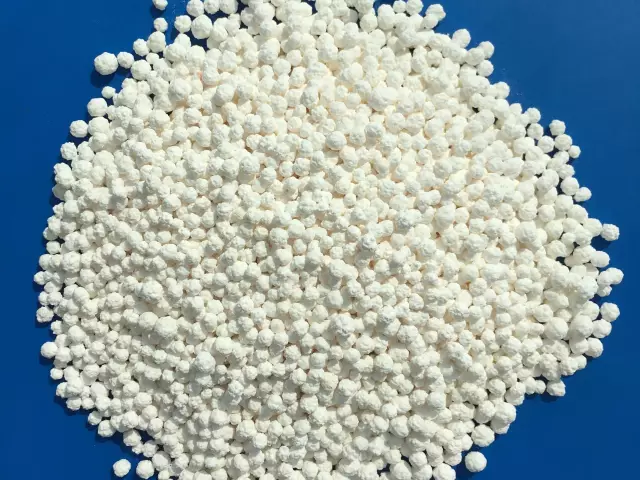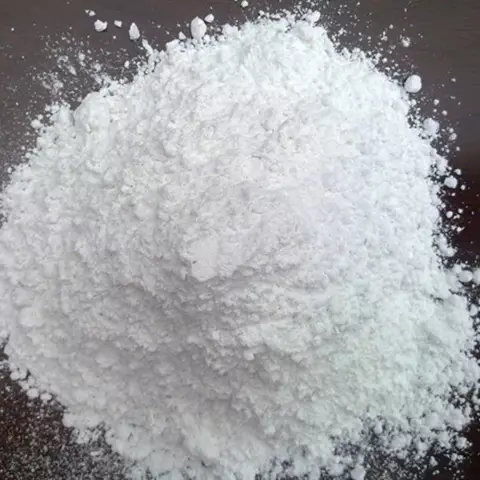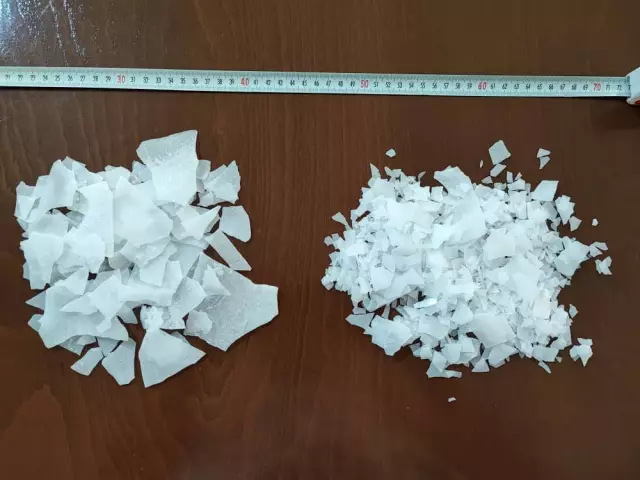- Author Rachel Wainwright [email protected].
- Public 2023-12-15 07:39.
- Last modified 2025-11-02 20:14.
Ammonium Chloride

Ammonium chloride - food additive E510.
Characteristic
From a physical point of view, food additive E510 is an odorless, white crystalline powder. Let's well dissolve in water. Aqueous solutions of a substance have a slightly acidic reaction.
Obtaining ammonium chloride
The substance is obtained chemically, by passing carbon monoxide through sodium chloride and ammonia solution. The chemical formula of the substance is NH4Cl.
The substance was still known to the inhabitants of Ancient Greece, they obtained ammonium chloride by sublimating soot from chimney furnaces, which were heated with camel droppings.
In Egypt, the compound obtained in this way was called the word "nushadir", which is where the name of the substance, known to this day, came from - ammonia.
In nature, ammonium chloride can be found in caves, near volcanoes and in cracks in the earth's crust in the form of small deposits and crusts, along with sulfur. Also, ammonia is a natural product of the decomposition of animal feces and urine. The term "ammonium salts" itself originates from the temple in honor of the deity Amun, at the entrance to which the parishioners smelled ammonia in order to fall into blissful ecstasy. A little later, the properties of ammonium chloride impressed alchemists so much that they deified the smoke obtained as a result of chemical reactions with ammonia.
Ammonium chloride properties
In medicine, since ancient times, an alcoholic solution of ammonium chloride, or ammonia, is well known - in a small concentration, it helps to revive a person and bring him out of a semi-faint state, since ammonium chloride vapors cause strong excitement of the respiratory center. However, it should be borne in mind that the ingestion of large quantities of ammonia into the respiratory tract is dangerous, as it can cause respiratory arrest.
Previously, ammonium chloride was used medicinally to treat bronchitis and as an expectorant drug. Today, a weakly concentrated solution of ammonia is used in medicine as a diuretic. It is easily absorbed from the gastrointestinal tract, and excreted by the kidneys, while taking with it excess fluid from the body.
Ammonium Chloride Applications
E510 is rarely used in the food industry. In Finland and a number of other Scandinavian countries, it is used as a seasoning for food. It is also included in licorice candies.
In addition, E510 additive is used for industrial purposes:
- when brazing and tinning steel;
- as a smoke-forming agent (due to its volatility, ammonium chloride has this property);
- in the agricultural industry as a fertilizer for alkaline and neutral soils, as well as for crops that react poorly to high concentrations of chlorine (rice, beets, corn);
- in galvanic cells.
Found a mistake in the text? Select it and press Ctrl + Enter.






